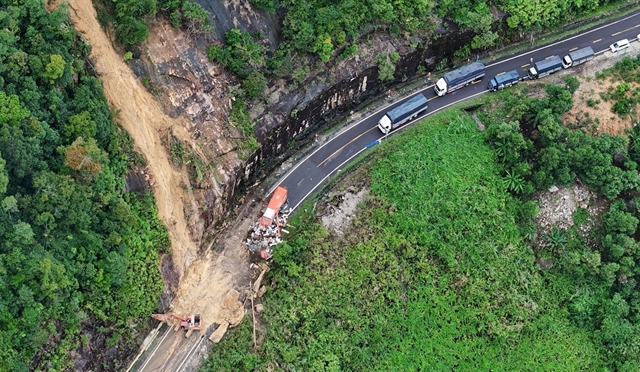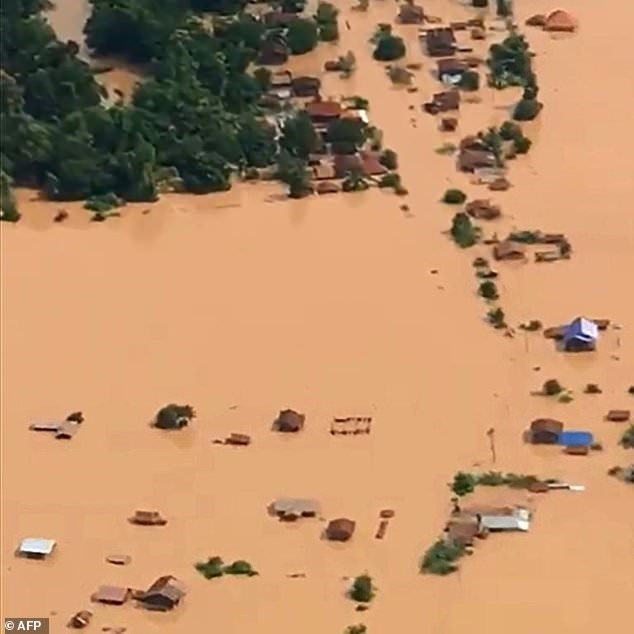 Environment
Environment

Cambodia, Laos and Việt Nam must work closer together to make the shift to using more renewable energy.
 |
| A village submerged in water in the wake of the Xepian-Xe Nam Noy hydropower dam collapse. — AFP/VNA Photo |
QUẢNG NINH — Cambodia, Laos and Việt Nam must work closer together to make the shift to using more renewable energy.
This a vital step in attaining the region’s as well as each country’s sustainable development, said Prof. Đặng Nguyên Anh, Vice President of the Việt Nam Academy of Social Sciences (VASS).
"Energy and water security are two of the most important issues for the three neighbouring countries. Cross-border cooperation helps cut environmental costs, secure clean water and protect natural resources for local communities in protected areas," Anh said.
VASS’s scientists and researchers gathered with their peers from the Royal Academy of Cambodia (RAC), the Lao Academy of Social Sciences (LASS) and the Korea Environment Institute at a conference themed “Green movement for energy and water security for the Mekong region” in Quảng Ninh, Việt Nam.
RAC President Eap Ponna said while a number of reserves built on the Mekong River were bringing certain benefits, the consequences on nature and communities might be unpredictable as the management of such reserves was still a new area of expertise to the region, which would require time to carefully study.
Eap Ponna called for a unified and coordinated mechanism between governments, social and economic enterprises and civil organisations to develop the region and protect natural resources.
Trần Minh, an expert on sustainable development from VASS, said while Việt Nam boasted great potential for renewable energy, its growth left much to be desired in recent years.
Waste, technological limitations and ineffective policies hindered the growth of renewable energy in the region.
Assoc. Prof Somchith Souksavath from LASS said energy production remained a key target for the Laos Government in ensuring energy security, fighting poverty and supporting the country’s socio-economic development. One of the Laos Government’s priorities for the energy sector would be to improve its capacity to produce renewable energy, both in short term and long term.
Dr Ik Jae Kim from KEI stressed on the importance of assessing the impact of climate change on the region’s water resource management and ecosystem.
Kim said while hydropower plants were necessary for development it was also very important to establish effective surveillance and warning systems in the management of the region’s water resources to reduce risks for all parties involved. This would be especially crucial for the Mekong River, which runs through multiple countries.
The green energy movement is expected to bring the three countries together to work to ensure the region’s energy and water security as well as to fight the adverse effects of climate change. Experts urged policymakers to provide mechanisms to encourage solutions, technological exchanges, sharing of information and cooperation between stakeholders in the region.
The Xepian-Xe Nam Noy hydropower dam in Laos’ province of Attapeu collapsed on July 23 this year. Five billion cubic metres of water, equivalent to more than two million Olympic-size swimming pools, swept away houses and flooded a number of villages downstream with hundreds went missing and dozens lost their lives in the disaster. — VNS




